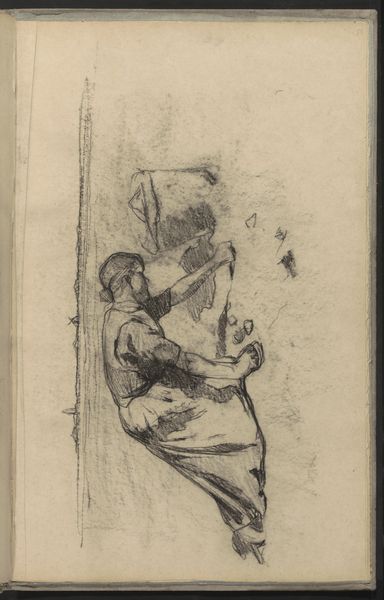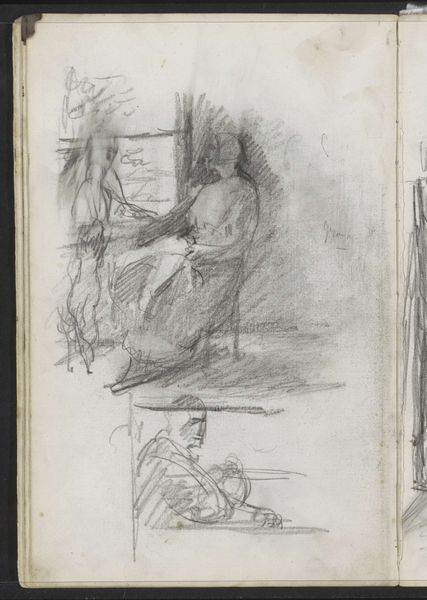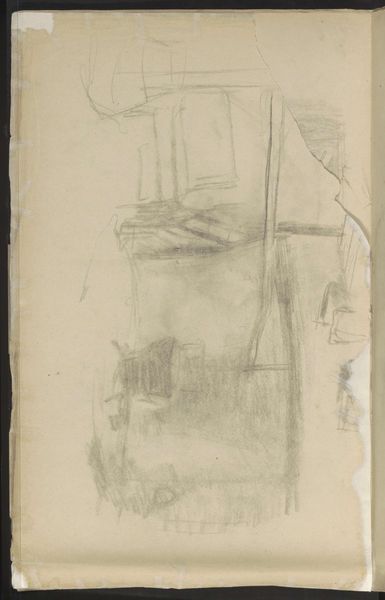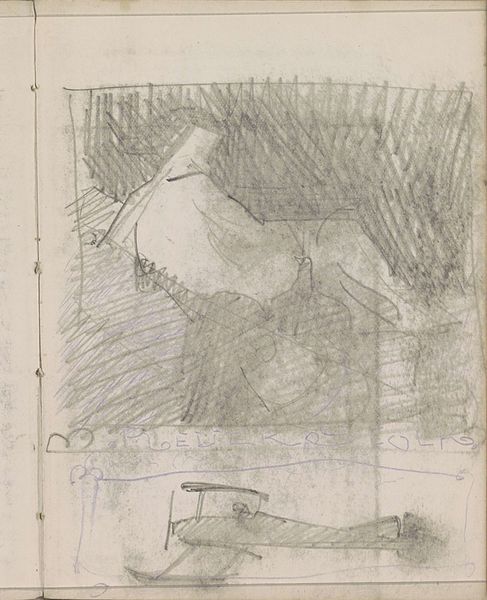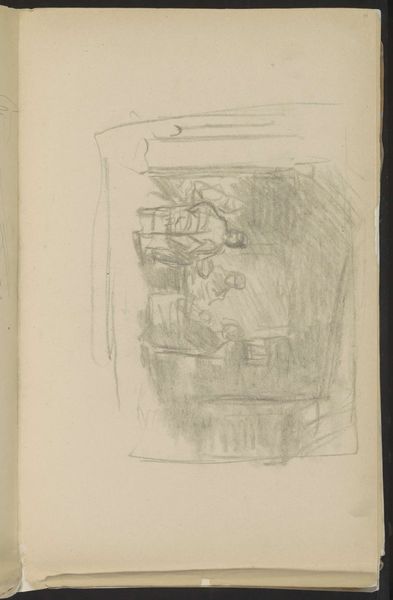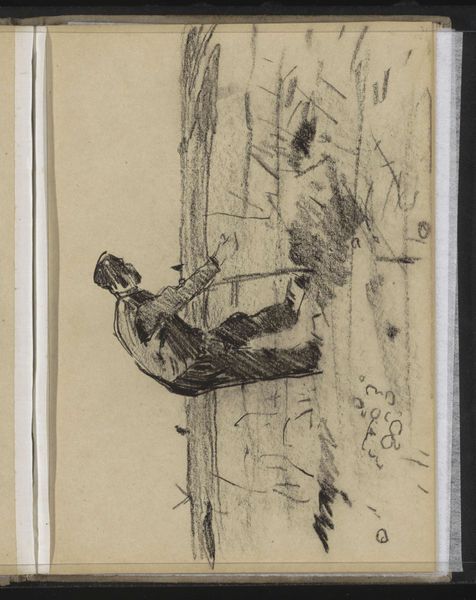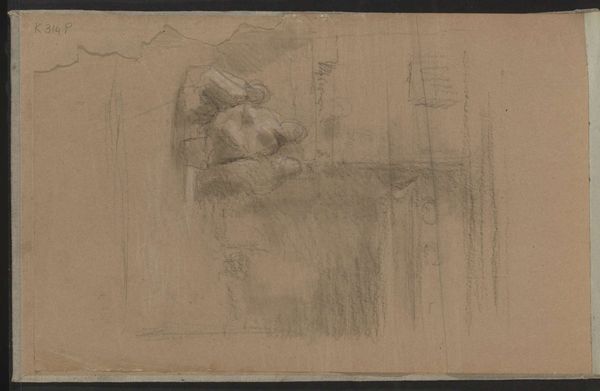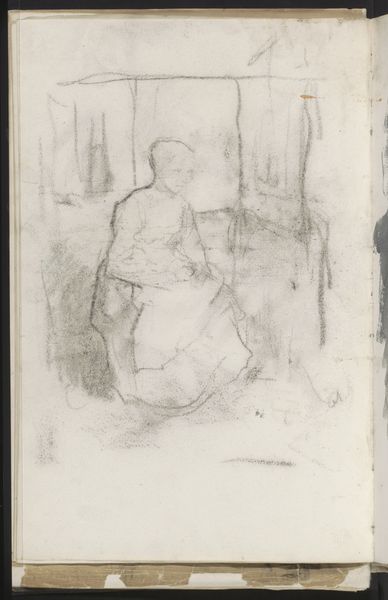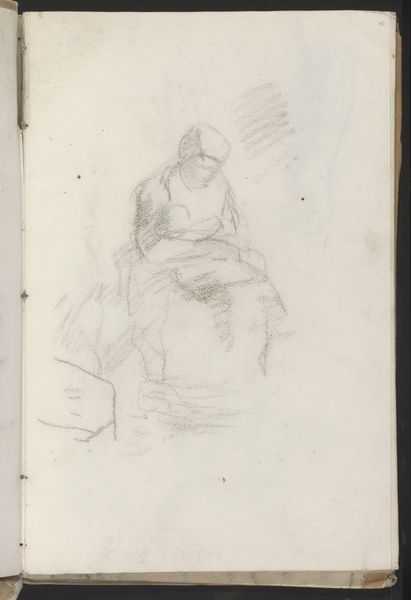
drawing, paper, pencil
#
drawing
#
landscape
#
figuration
#
paper
#
intimism
#
pencil
#
genre-painting
#
realism
Copyright: Rijks Museum: Open Domain
Albert Neuhuys sketched this interior scene of two women working, capturing a moment of domesticity and labor. The act of handwork itself—sewing, perhaps—resonates deeply within our cultural memory, far beyond its practical purpose. Consider the Fates of ancient Greek mythology, spinning, measuring, and cutting the threads of life. Their work was not merely utilitarian; it dictated destiny. Similarly, in folklore, spinning and weaving are often associated with female virtue and industriousness. In the early Christian era, it symbolized creation and the order of the universe. Observe how the women are positioned in the drawing. It is reminiscent of countless images across time and cultures that depict women engaged in repetitive, meticulous tasks. They are suggestive of patience, care, and the cyclical nature of life. The image is both mundane and deeply resonant, touching on primal themes of creation, destiny, and the quiet strength found in everyday acts. It is a powerful example of how symbols evolve, yet retain their capacity to move us.
Comments
No comments
Be the first to comment and join the conversation on the ultimate creative platform.

